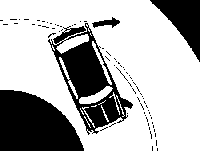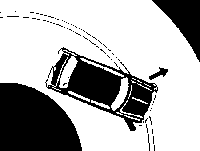Oversteer and Understeer
Tire pressures can be used to help correct a handling problem, such as a tendency to oversteer or understeer.
Oversteer.

In both oversteer and understeer, the tires are losing their ability to grip the road surface. This usually happens because the speed and weight of the car is exerting a force on the tires and deforming it so that part of the tire is no longer in contact with the road. Slowing down and steering into the slide will correct the situation, but slow gradually, do not apply the brakes.
To correct oversteer with tire pressures, raise the rear tires by 7-14kpa(1-2lb/in2), while maintaining front tire pressures.
Understeer.
 This can occur when you drive a car rapidly around a corner. The front
wheels do not turn into the corner as fast as expected and tend to
"plough on". This tends to affect front wheel drive cars more.
Front tire wear can be increased considerably.
This can occur when you drive a car rapidly around a corner. The front
wheels do not turn into the corner as fast as expected and tend to
"plough on". This tends to affect front wheel drive cars more.
Front tire wear can be increased considerably.
To correct this problem with tire pressures, raise the level in the
front tires by at least 14kpa(2lb/in2) and up to
24kpa(3.5lb/in2), while maintaining rear tire pressures.
In both these situations, worn or inappropriate tires can contribute markedly. Match the tires you buy to the driving you expect to do.